Those of us who grow roses should be seeing them flower now, filling the garden will their wonderful scent. Luckily roses are a plant that when looked after correctly, they will keep producing this display well into autumn. So I thought I’d do a few tips on caring for them during the summer.
Pests and Diseases
The first thing to do is to keep an eye out for pest and diseases. We’ve had a dry April and May in the UK, which are prime conditions for aphids. So get into the habit of doing a daily check as it’s easier to treat an outbreak when it’s small and not all over the rose. Ideally you should use nature to control aphids, with Ladybirds can consume thousands of aphids. So it’s always worthwhile to put up ladybird boxes around your garden to encourage them to stay. If this still doesn’t work, I would suggest a garlic spray. This is a commercial product that is derived from garlic, and is organic.
Aphids have another consequence to the health of roses. The insects excrete a sugary substance when they eat, which can completely cover the leaves. Not only is this substance unsightly, it can cause dust to cling to the leaves and suffocate the plant. In dry periods, it’s worth washing this off in the morning so the leaves have time dry off during the day.
Powdery mildew is fungus that can grow on the top of rose leaves, causing them to die off. Like other fungi it needs damp and high humidity conditions to grow, so make sure your plant has lots of light and good air flow. Roses are less susceptible to diseases if they are regularly watered, however avoid getting the leaves wet when you’re watering them. I haven’t found a good organic non-chemical spray to battle this fungus, but some people have found a milk solution works.
Damp and humid conditions are also good for the black spot fungus to grow. The first step is to remove the diseased leaves as quickly as possible. This will stop the fungus spores from spreading to other leaves. If it is a large outbreak, and you don’t want to use chemicals, then I suggest a garlic spray as well. A short video on how I treat black spot can be found here.
Dead-heading
The next most important job is to keep up with the dead-heading. This is done not only to tidy away dead looking flowers but to also encourage the production of new flowers. Done regularly you can have roses flowering well into September.
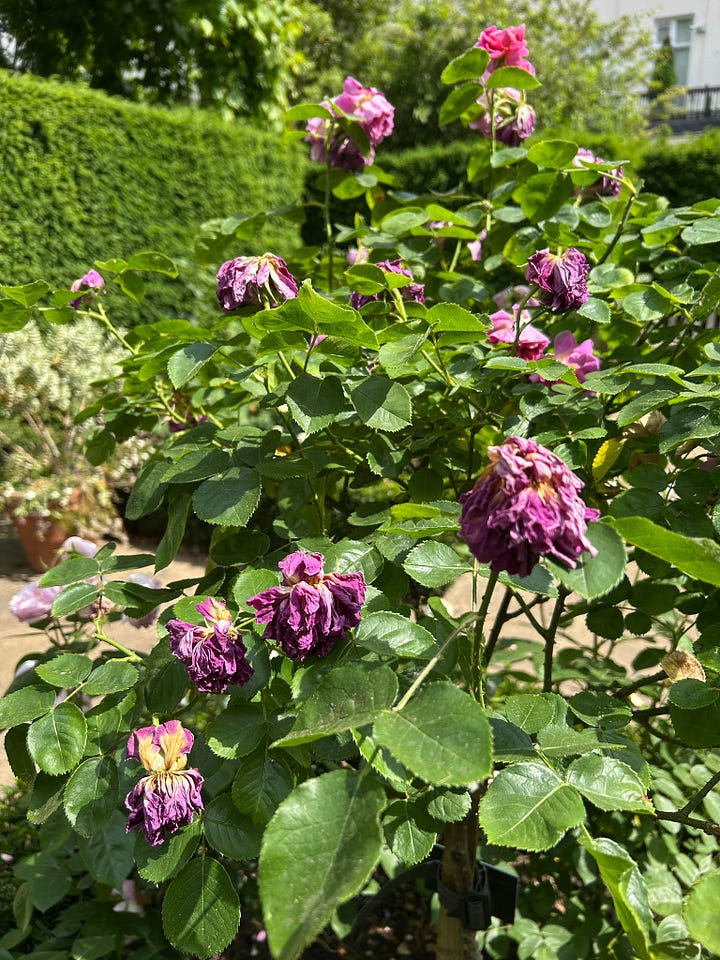

Even though dead-heading is relatively straight forward, here are some tips to make sure you can get the most of your rose.
Do it regularly and do it often. As soon as the flower starts to look faded, don’t be afraid to get cutting. The more energy that is wasted on producing rosehips is less energy to produce more flowers.
Prune to the next true bud on the stem. With roses that have multiple flowers on a single head, it’s tempting to cut just below the flower. But any flowers that will be produced here will be much weaker and won’t look as good.
Use sharp secateurs. If you use blunt secateurs to dead-head the rose, then you risk damaging the stem and allowing diseases to enter.
If you would like more information, then a short video I made demonstrating dead-heading can be found here.
Staking
Not so much an issue with classic hybrid-tea or florabunda roses, but the modern shrub roses can topple over. This is due to their vigorous growth and producing large clusters of flowers, which leads to them being very top heavy with weak stems. This is less of an issue as they get older and their stems thicken and harden.
Therefore you may need to stake some of them stems so that the flowers are not wasted on the ground and to stop their stems from snapping. A simple bamboo cane and string will do, but with multiple stems you may want to use gardening support hoop.
Feeding
Finally we need to look at feeding them. Now that they are producing flowers they are requiring a huge amount of nutrients, especially as you keep dead-heading the flowers. So if you don’t replace the nutrients in the ground, you won’t get many repeat flowers for the whole summer. I recommend a liquid feed for each rose after the first flush of flowers have finished, and then once every 3-4 weeks until September. That way I’ve had roses in flower up until the first frost.
Ideally it should be a feed high in potassium, such as a tomato feed, as plants predominantly use potassium to produce flowers. However, a general plant feed is acceptable.
I really hope this helps you all, if you have any further questions then please drop them in the comments below.

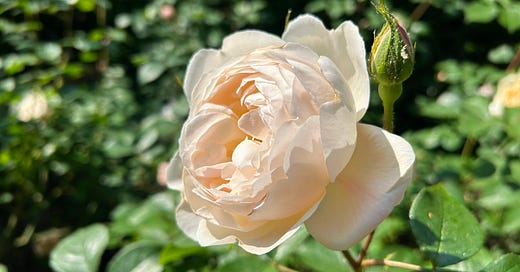



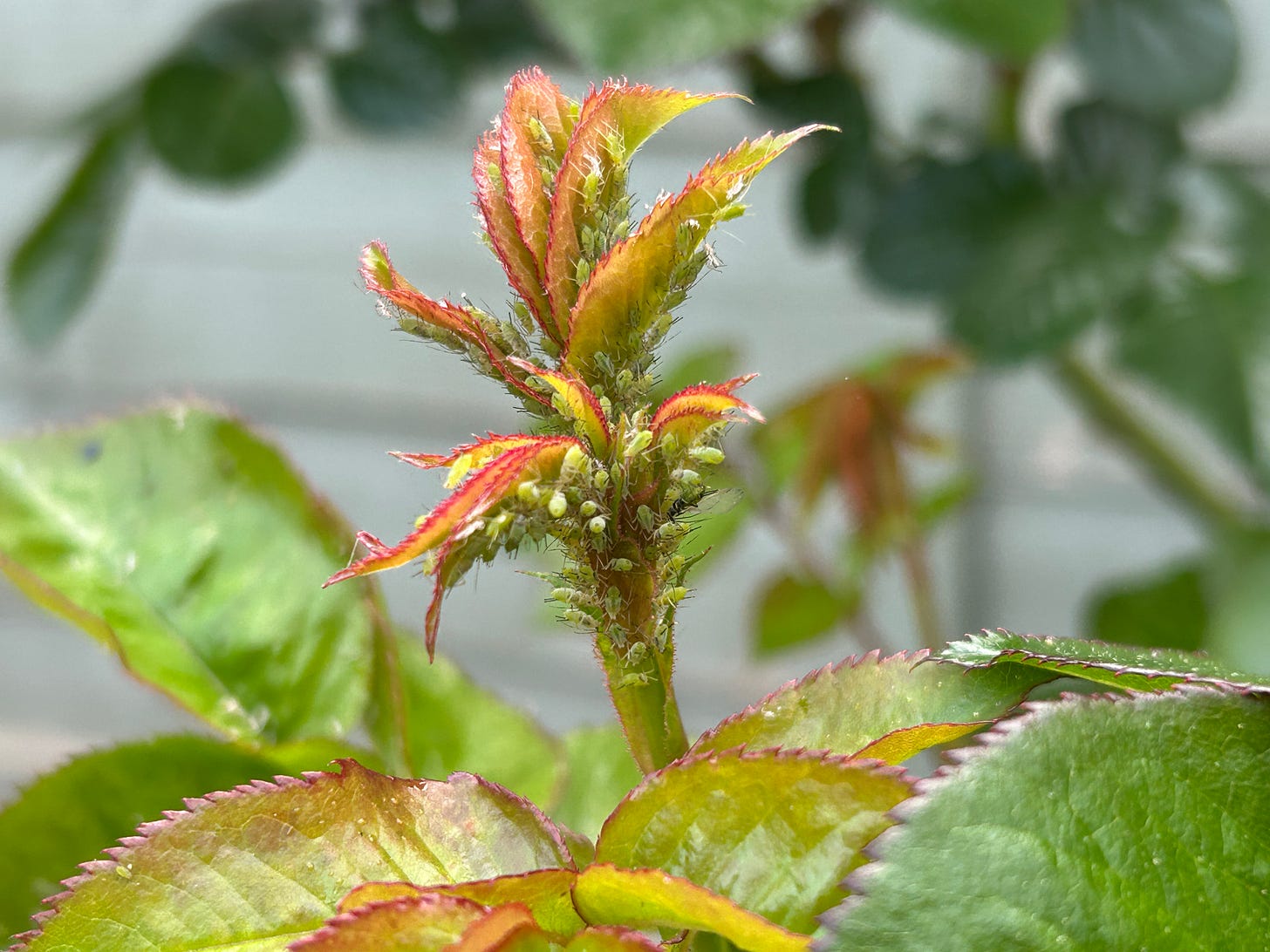
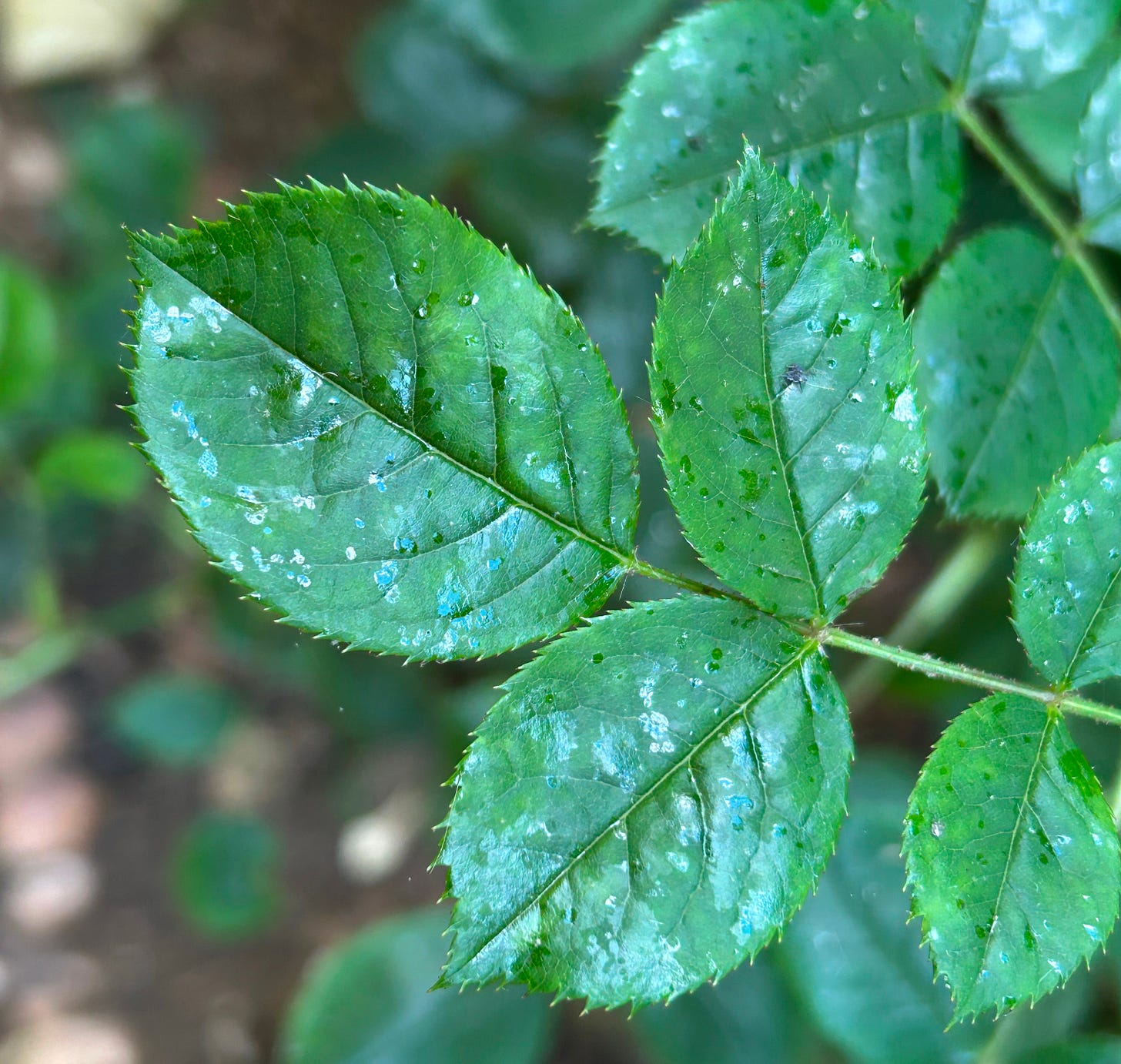
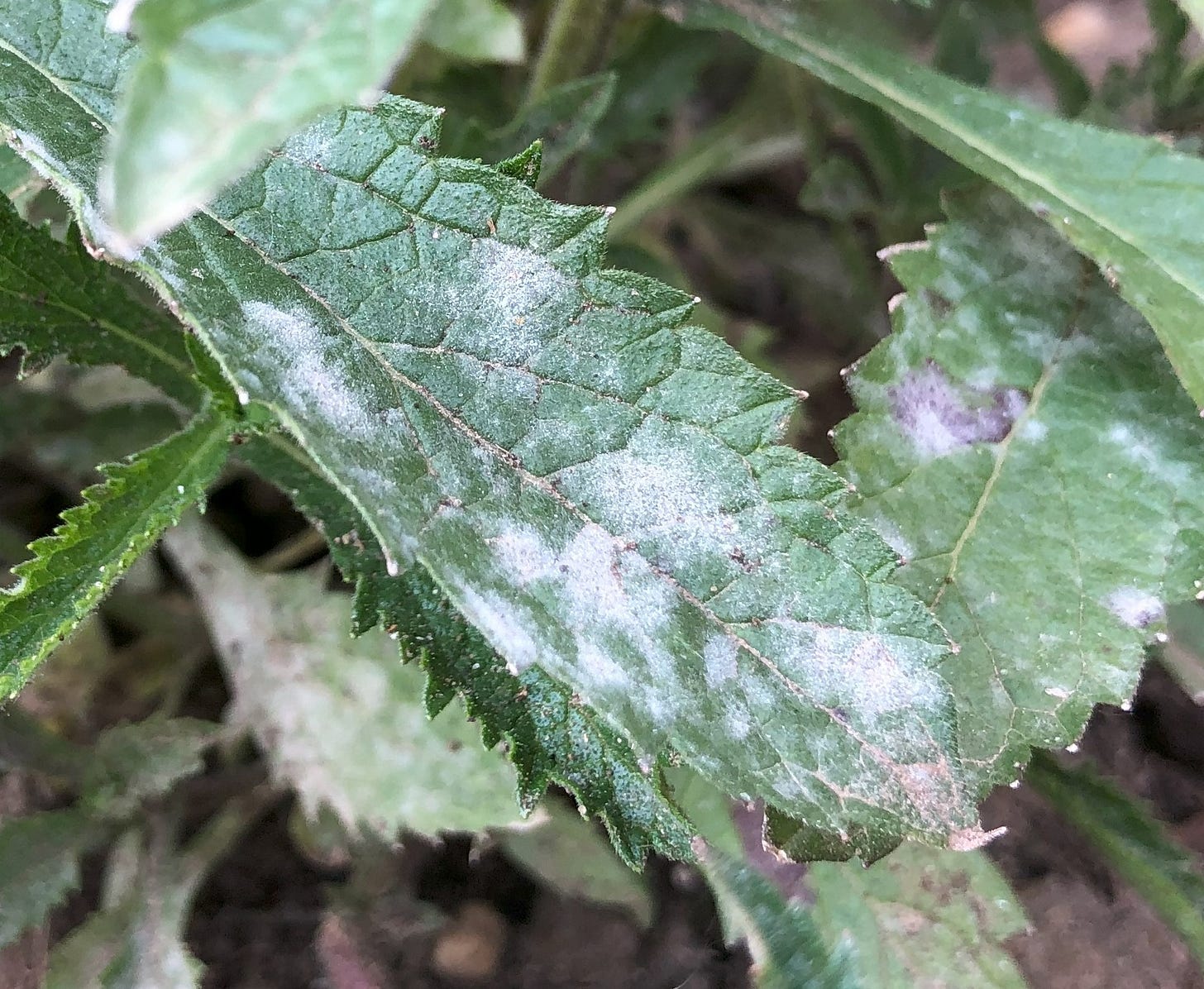
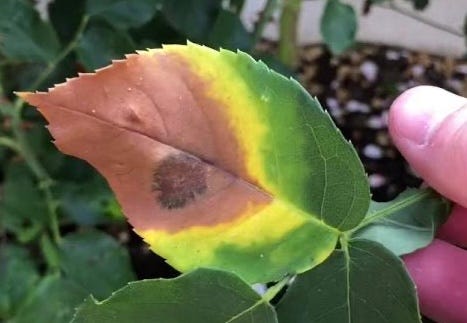
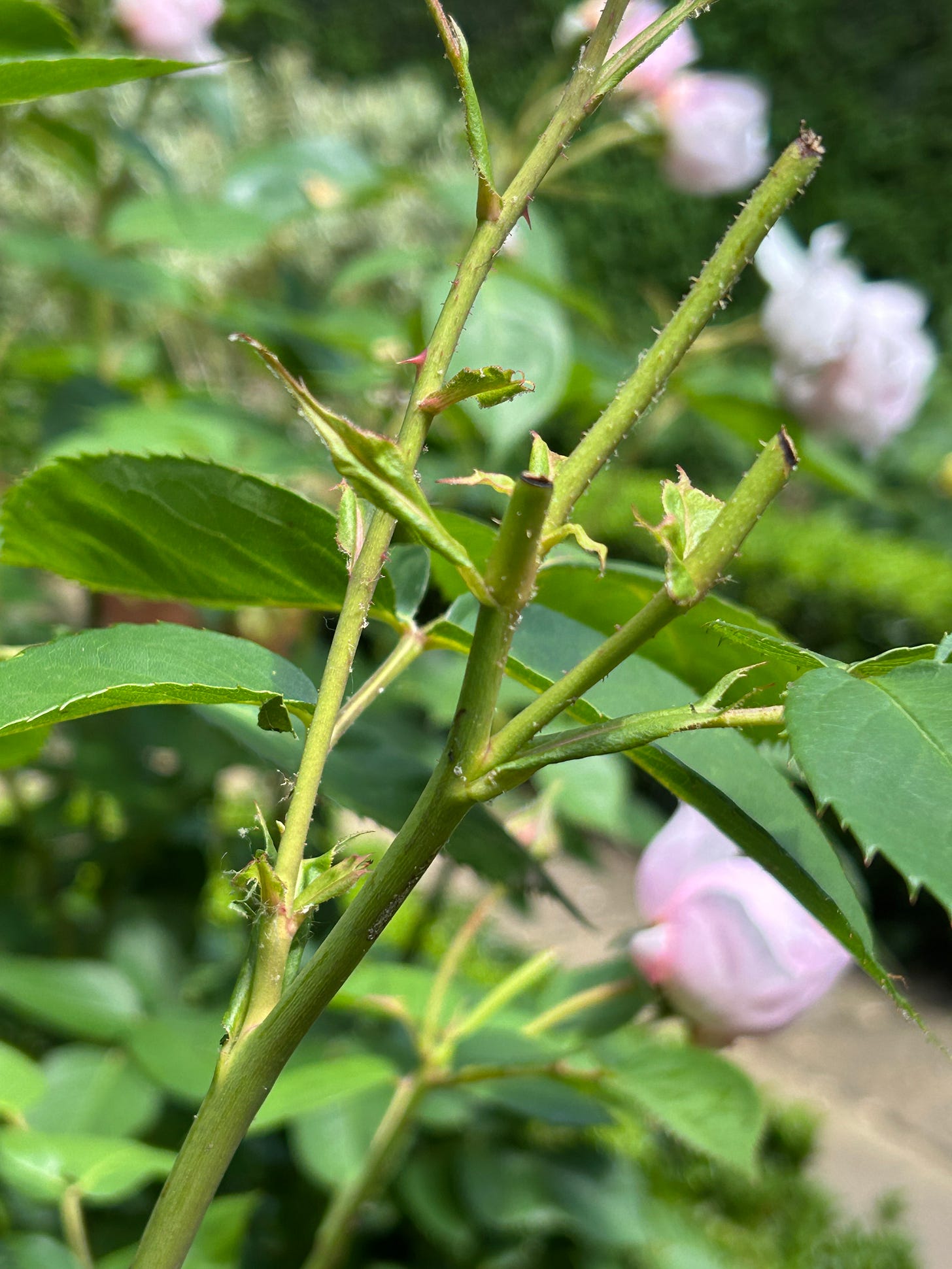
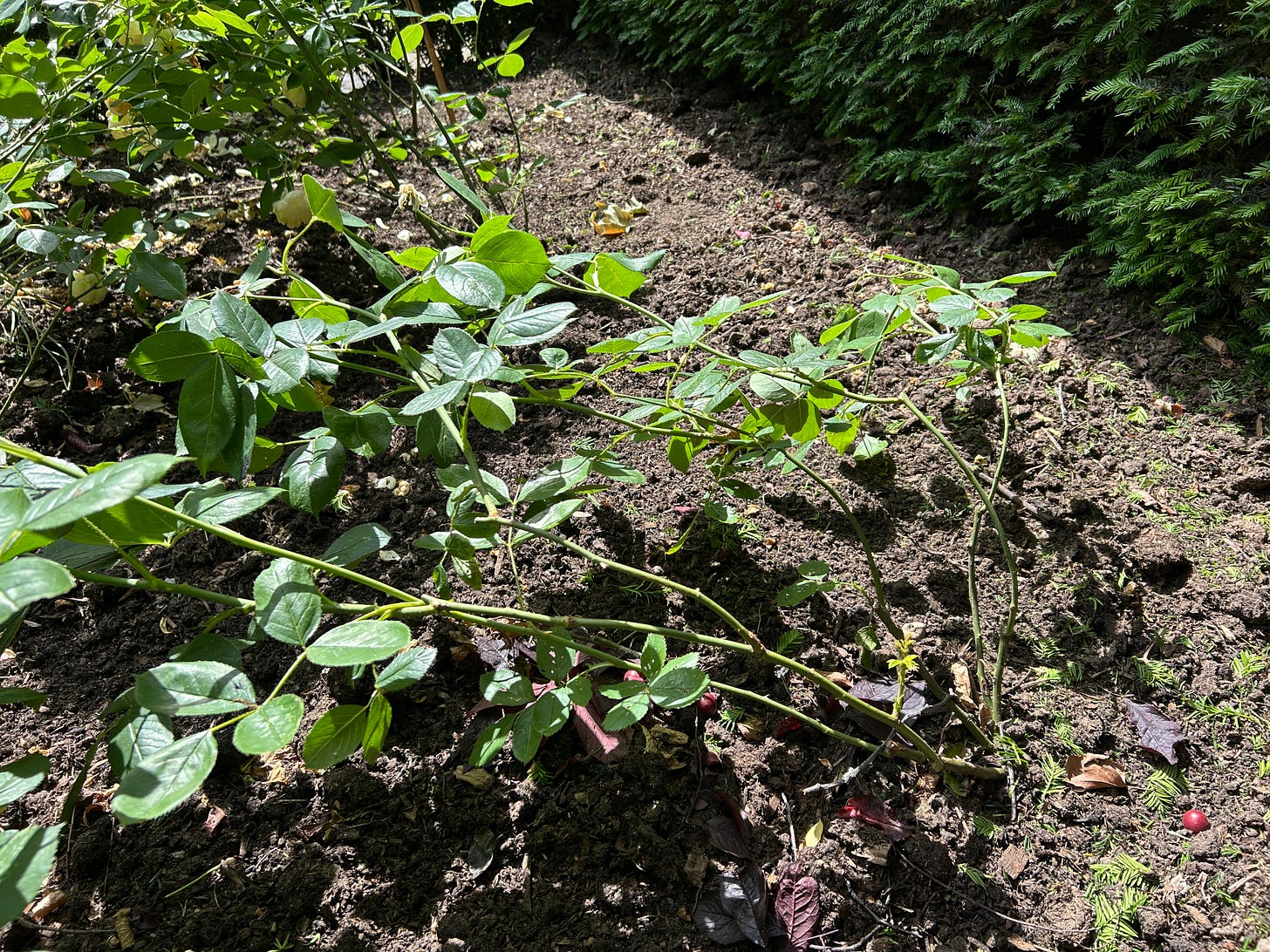
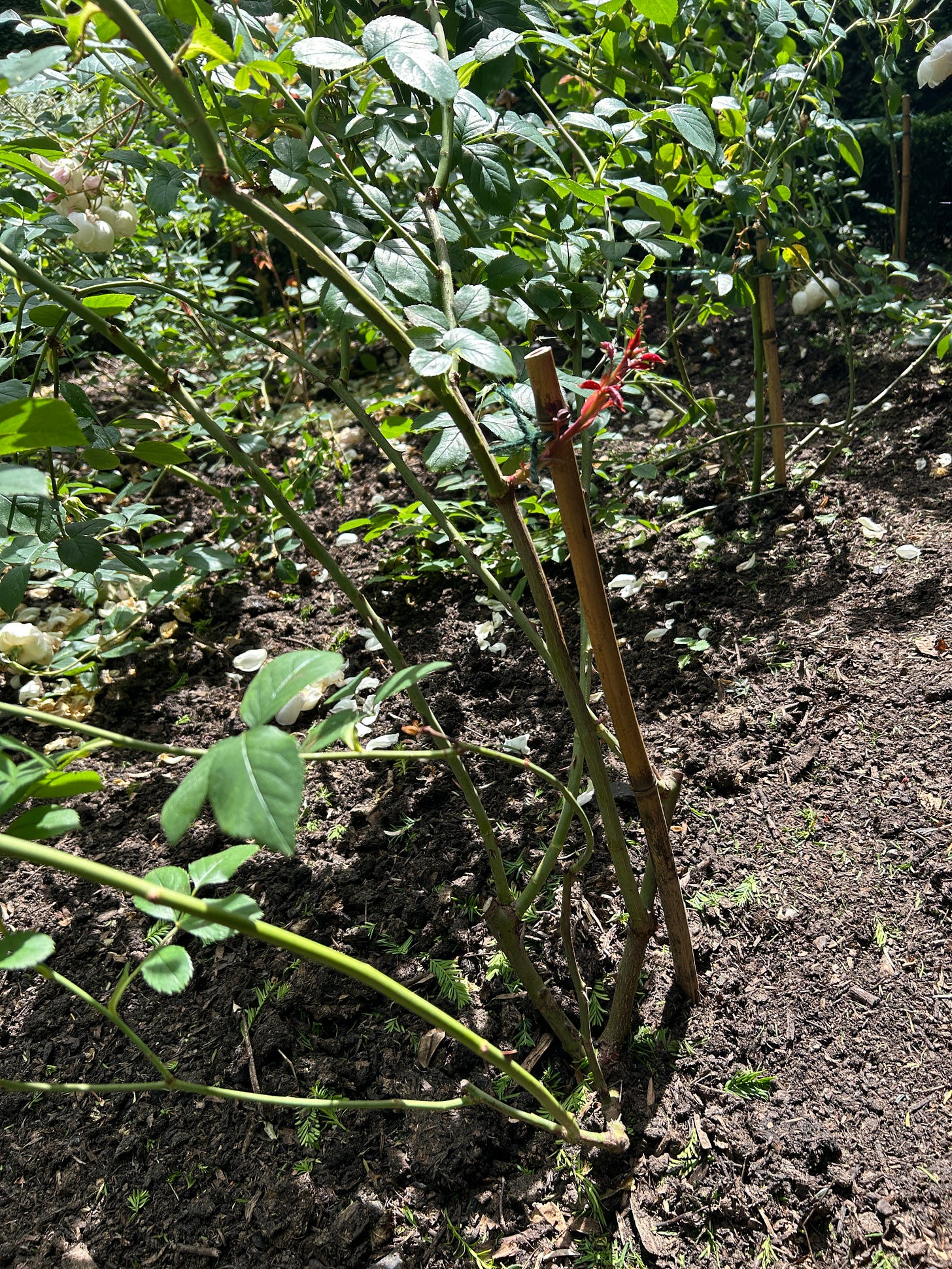

As always, I appreciate and learn from your posts! I'm here in Rockport, Massachusetts where we have received a lot of rain this spring and thus the blackspot is already showing up. Due to winds, there are quite a few diseased leaves on the ground. I am not happy to see this since my roses are bursting with blooms just starting to open. In addition to removing what leaves I can, should I try garlic spray? Do I purchase such a spray or make my own? Thank you, Karen